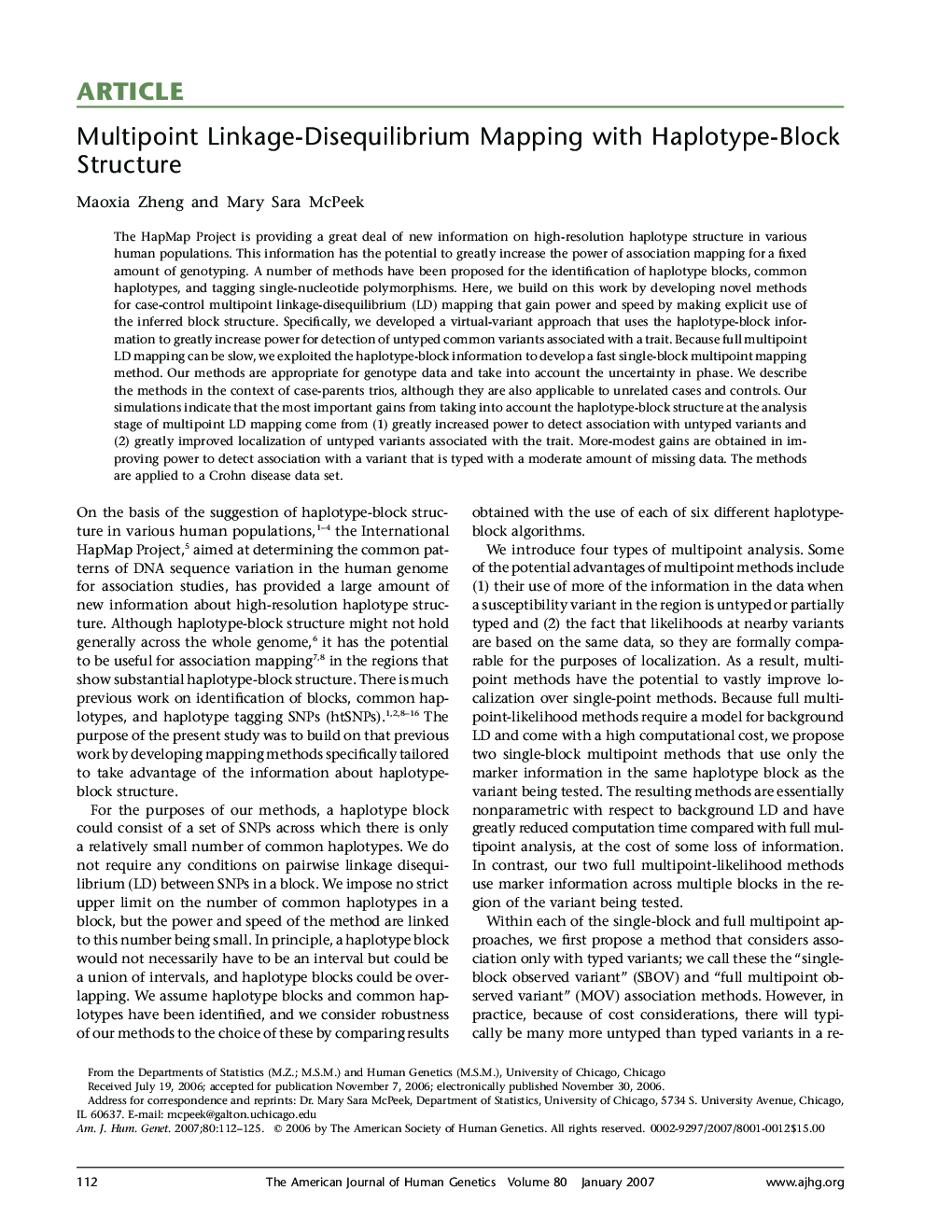| Article ID | Journal | Published Year | Pages | File Type |
|---|---|---|---|---|
| 2812104 | The American Journal of Human Genetics | 2007 | 14 Pages |
The HapMap Project is providing a great deal of new information on high-resolution haplotype structure in various human populations. This information has the potential to greatly increase the power of association mapping for a fixed amount of genotyping. A number of methods have been proposed for the identification of haplotype blocks, common haplotypes, and tagging single-nucleotide polymorphisms. Here, we build on this work by developing novel methods for case-control multipoint linkage-disequilibrium (LD) mapping that gain power and speed by making explicit use of the inferred block structure. Specifically, we developed a virtual-variant approach that uses the haplotype-block information to greatly increase power for detection of untyped common variants associated with a trait. Because full multipoint LD mapping can be slow, we exploited the haplotype-block information to develop a fast single-block multipoint mapping method. Our methods are appropriate for genotype data and take into account the uncertainty in phase. We describe the methods in the context of case-parents trios, although they are also applicable to unrelated cases and controls. Our simulations indicate that the most important gains from taking into account the haplotype-block structure at the analysis stage of multipoint LD mapping come from (1) greatly increased power to detect association with untyped variants and (2) greatly improved localization of untyped variants associated with the trait. More-modest gains are obtained in improving power to detect association with a variant that is typed with a moderate amount of missing data. The methods are applied to a Crohn disease data set.
